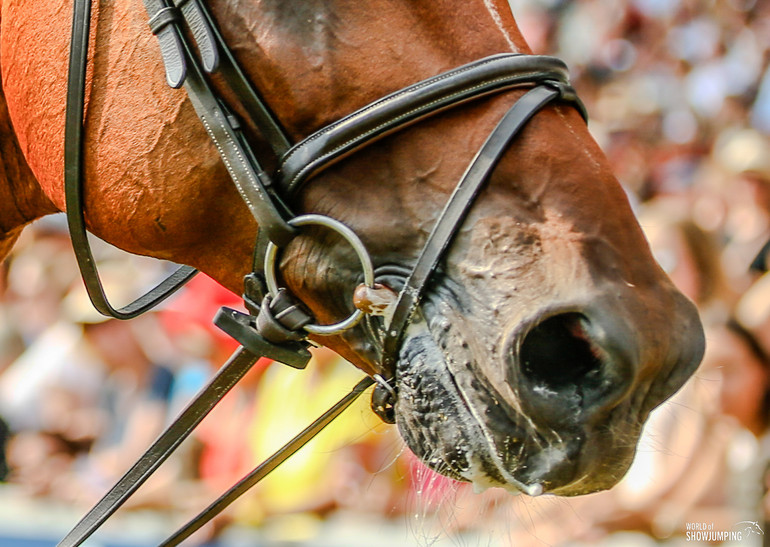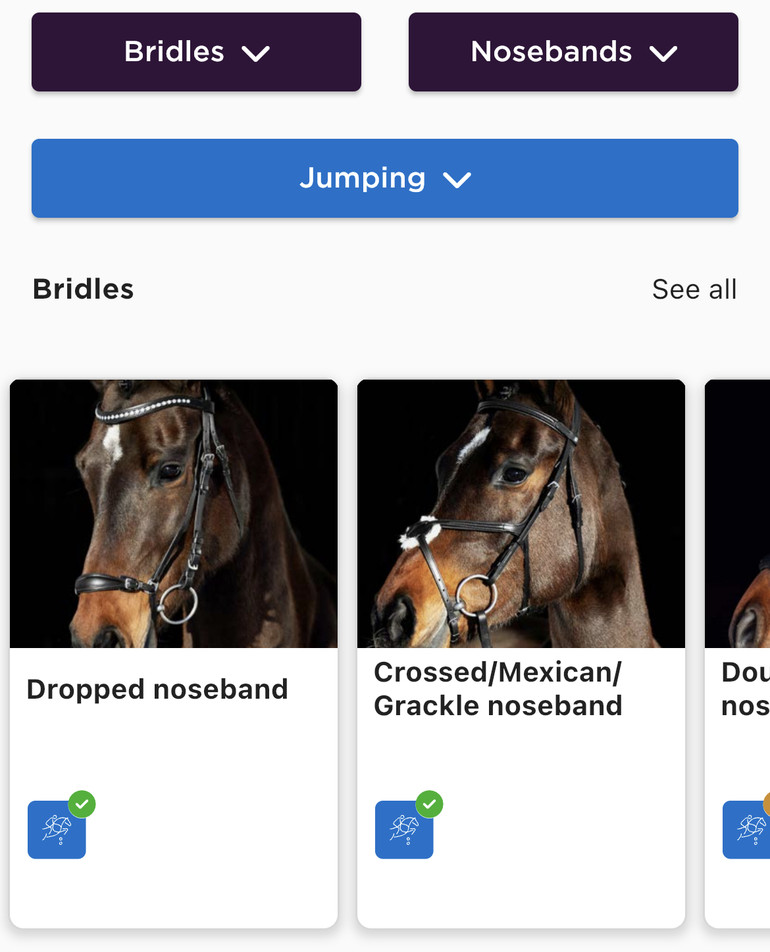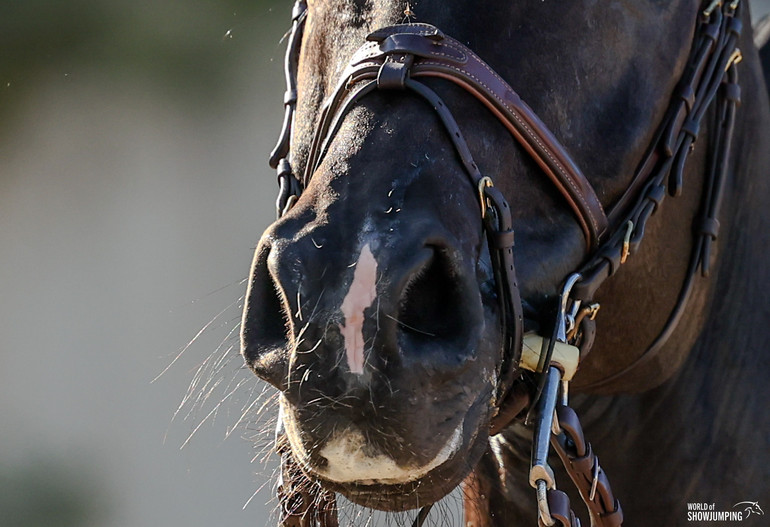Text © World of Showjumping
“The acceptance of non-friendly horse tack is today a norm which needs to be better regulated,” the International Jumping Officials Club (IJOC) stated back in June this year, as part of their proposed changes to the FEI Jumping Rules regulating saddlery. The IJOC’s suggestion to the FEI was to modify the rules regarding nosebands “(…) in response to the horse community and in compliance with horse welfare.”
The IJOC-proposal – suggested to be voted on at the FEI Hybrid General Assembly in Mexico City this November – was however rejected by the FEI and referred to a future rules revision.
Nosebands and horse welfare
The FEI Jumping Rules article 257.1.4 simply states that there are no restrictions on bits and nosebands; a wording some of the FEI’s stakeholders have found to be insufficient in today’s climate. While there are no restrictions listed in the rules, the Ground Jury has the right – based on veterinary advice – to forbid the use of a bit or noseband that “(…) may cause injury to the Horse” but according to the IJOC “(…) it is very rare that this happens.” Although not further restricted in the Jumping Rules, the FEI Tack App lists a number of bits and nosebands – as well as other inventive accessories and solutions – not allowed in competition.
We need to ensure the future of our sport and respond
- The International Jumping Officials Club -
In their proposed change to the FEI Jumping Rules article 257 regarding saddlery, the IJOC shared how they see nosebands which cannot be viewed as compliant with horse welfare – with metallic chains, non-smooth rope as well as hard spiky inserts. “We need to ensure the future of our sport and respond,” the Club pointed out to the FEI.
The IJOC suggested to align article 257 with the wording used for children’s events, which states that nosebands must be flat and made of leather or non-abrasive leather-like material, with the permitted nosebands being dropped, cavesson, flash and crossed noseband as well as their variations.
Echoing the proposal made by the IJOC, the Irish federation came with a similar suggestion – referring to the lack of restrictions on nosebands. “However, with the welfare of the horse in mind, and with Social License taken into consideration, the IRL NF believe all nosebands should be bought into line with Ponies. (Annex XI Art 21 Inspection of Saddlery Art 1.1.2 Nosebands). This will stop the use of chains and other materials,” the Irish NF pointed out.
In line with the IJOC and the Irish federation, the German federation stated “(…) that it is an emergency issue to prohibit nosebands that have a chain underneath” – suggesting the FEI change the wording in article 257.1.4. “This issue can’t wait until the next full revision of the Jumping Rules,” the Germans wrote.
This issue can’t wait until the next full revision of the Jumping Rules
- The German Equestrian Federation -
The Swedish federation also supported the proposal – pointing out that only leather material should be accepted with the exception of nosebands which may optionally be made of flat, non-abrasive leather-like material. “Horse Well fare [sic.] cannot wait until the next full revision,” was the message from the Swedes.
Despite the concerns raised by its officials, the FEI responded that it will work on the rules for tack and equipment following a wider consultation for the next revision or full revision – referring to the FEI database for tack, equipment and dress as well as the Jumping Rules article 257.1.4 as sufficient regulation for items that may cause injury to the horse.
Noseband tightness
While the proposal from the IJOC to strengthen the regulations on the use of nosebands was rejected by the FEI, the international governing body has on its side suggested a change to the FEI General Regulations regarding noseband tightness. To control the tightness of a noseband, the FEI has proposed to introduce a “FEI Objective Measuring Tool”.
We express our concern about this rule change
- European Equestrian Federation -
This proposal – a result of recommendations from the Equine Ethics and Wellbeing Commission – sparked feedback from the American, Swedish, Irish, German and British federations as well as from IDTC (International Dressage Trainers Club), IDRC (International Dressage Riders Club), IDOC (International Dressage Officials Club), and EEF (European Equestrian Federation).
“We express our concern about this rule change,” the EEF stated. “This is dangerous to implement and we need to know how a steward can even do that at a bit check with nervous horse. We also struggle to find any scientific evidence that this is the right tool to address this issue.”
USEF pointed out that while horse welfare must be at the forefront, all decisions should be based on science – referring to what can be considered to constitute “sufficient laxity” from a veterinary perspective in regard to the welfare of the horse. “We must implement rules that have been thoroughly researched and vetted as the unintended consequences could be far greater than the current perceived issue. Additionally, for a rule regarding noseband tightness to be successfully implemented, there must be time to train officials and to educate athletes, trainers, and grooms. A date of January 1, 2024, is too soon considering there are research studies underway, and the protocols have not yet been published,” the American federation stated.
We must implement rules that have been thoroughly researched and vetted
- US Equestrian Federation -
Postponing the implementation of the proposed rule until 2025, the proposed final wording from the FEI – to be voted on during the FEI Hybrid General Assembly in Mexico City – reads as follows:
“Effective 1 January 2025, the following provisions apply regarding the Noseband Tightness: “The noseband must be adjusted with sufficient laxity, as determined by an FEI approved Measuring Device. The rule applies to all types of nosebands and to both the upper and lower noseband. The detailed protocol for measuring the tightness of noseband(s) is provided for in the (Discipline specific) Noseband Tightness Measuring Protocol(s). Excessively tightened noseband(s), as determined by an FEI approved Measuring Device, shall incur the following consequences: Pre-Competition: The Horse and the Athlete combination is not allowed to start unless the noseband is re-adjusted to allow enough laxity. During the Competition: The Horse and Athlete combination is eliminated from the Competition in question and the Athlete is issued with a Yellow Warning Card.”
Delaying the implementation to 1 January 2025, the FEI believes it will have sufficient time to educate and train officials, as well as to develop and manufacture their FEI Objective Measuring Tool.











